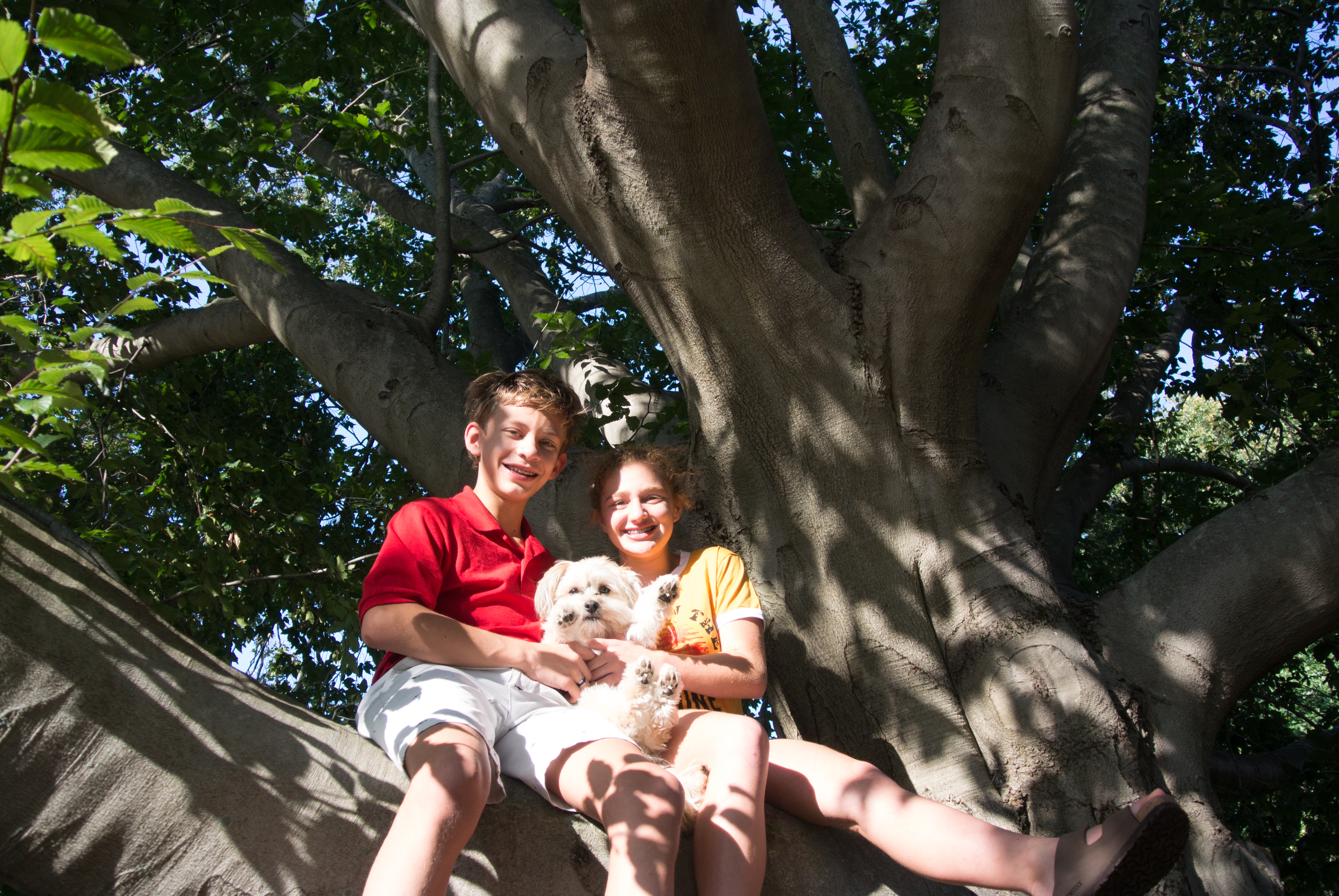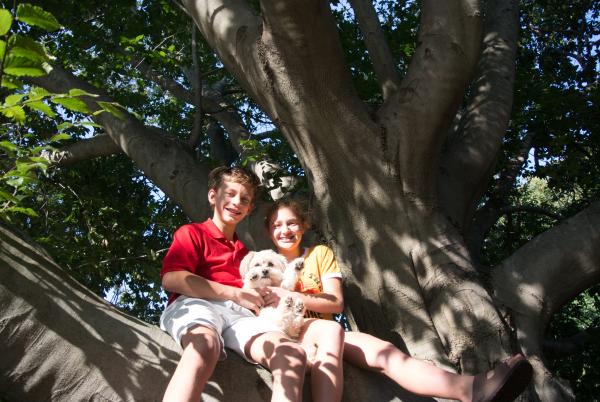KID REPORTERS’ NOTEBOOK
Go Climb (and Plant) a Tree


Leo and his friends enjoy the shade of a tree on a hot summer day in Louisville, Kentucky.
In cities across the United States, trees are vanishing at an alarming rate. A recent U.S. Forest Service study found that an estimated 36 million trees are being lost in cities each year.
Leaves and branches that cover a city when viewed from above are referred to as an “urban tree canopy.” A healthy canopy is not just pleasing to the eye. It also lowers energy costs, decreases noise, reduces air pollution, improves community health, and provides a habitat for wildlife.
Unfortunately, not enough attention is being paid to the value of trees in urban settings. I recently spoke with Bill Hollander about the issue. He is a councilman in Louisville, the largest city in Kentucky.
“Trees are an important way to reduce the urban heat island effect,” he said, “which raises temperatures and harms health in our urban core.”
Over time, Louisville has lost more than 6,500 acres of canopy. “That averages out to about 820 acres of canopy, or 54,000 trees, per year,” Hollander said.
Leo with Erin Thompson, a supervisor at the Louisville Division of Community Forestry, and Louisville Councilman Bill Hollander
A COMMUNITY EFFORT
The good news is that local organizations are pitching in to be part of the solution. “The goal for the city is to reach a 45% canopy coverage over a 40-year time span,” said Erin Thompson, who is an urban forester/community forestry supervisor for the Louisville Division of Community Forestry.
Community Forestry is working with local nonprofits to achieve this goal. One of the organizations is called TreesLouisville. Its mission, Thompson said, is to raise community awareness about the benefits of healthy tree canopies.
TreesLouisville funds the planting of trees in areas with the greatest need and promotes the preservation of the existing tree canopy.
Another organization, Louisville Grows, “is training citizen foresters on the proper planting of trees,” Thompson said, so that kids can grow up in healthy environments. “Neighborhood plantings occur a few times a year,” she added.
The city, meanwhile, has been working with local schools to create a tree education curriculum and a media campaign.
Everyone can do their part to increase the urban tree canopy, Thompson told Leo.
DOING YOUR PART
Every family can do their part in their own neighborhood. Thompson encourages Louisville residents to plant and prune trees and to volunteer at Community Forestry events where trees are given away to be planted across the city.
“If more of the citizens of Louisville become motivated to see change in our community regarding policies with trees,” Thompson said, “that will have a great impact.”
